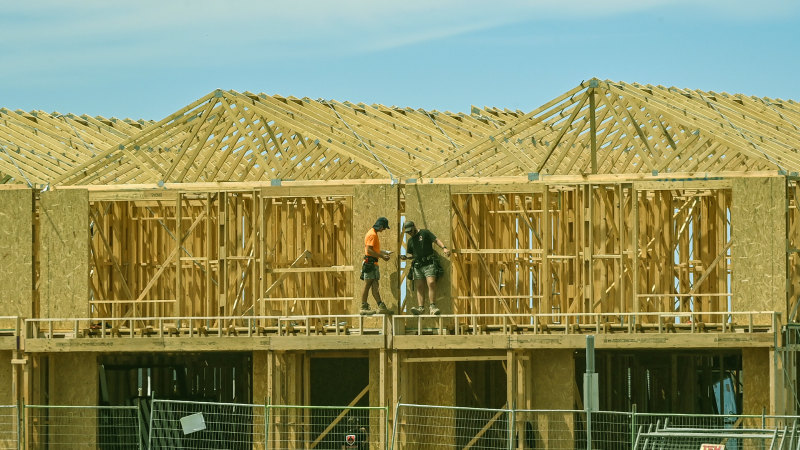
A radical new proposal to permit the construction of three-storey apartments and townhouses across Australia’s capital cities aims to deliver 67,000 additional homes annually. This ambitious initiative, suggested by the independent Grattan Institute think tank, could significantly reduce rent costs and offer young Australians the opportunity to live closer to central business districts (CBDs).
The Grattan Institute estimates that Melbourne alone could see an increase of 431,000 homes within a 15-kilometer radius of the city center if property owners are allowed to build these structures without needing specialized planning permits. In Sydney, the potential is even greater, with up to one million additional homes deemed commercially feasible under revamped planning regulations.
Transformative Changes in Urban Planning
The proposed changes would grant default permission for larger apartment complexes of six stories or more around major transit hubs, such as railway stations and key commercial centers. This would mark a significant departure from current regulations that require developers to navigate a complex web of state and local council planning laws.
Brendan Coates, the housing program director at the Grattan Institute, believes that such sweeping changes in planning rules would have a profound impact on every capital city, increasing the availability of homes for potential residents.
“Australia needs a housing policy revolution. The equation is simple: If we build more homes where people most want to live, housing will be cheaper, and our cities will be wealthier, healthier, and more vibrant,” Coates stated.
Economic and Environmental Impacts
According to Coates, the proposed increase in housing construction, which currently stands at less than 200,000 units annually, would rise by 67,000 each year. This boost could reduce rents by 12% over a decade and lower the median home price, currently $870,000, by $100,000. Additionally, the plan is expected to contribute $25 billion annually to the Australian GDP and help reduce greenhouse gas emissions by encouraging more people to live closer to transport, schools, and employment opportunities.
Currently, a significant portion of land within 30 kilometers of central Sydney (80%) and central Melbourne (87%) is zoned for housing of three stories or fewer. In Brisbane, Perth, and Adelaide, about three-quarters of the land is restricted to two stories or fewer. This zoning limitation contributes to the low population densities observed in Australian capital cities compared to other developed nations.
Challenges and Criticisms
The Grattan Institute’s report highlights the restrictions on new housing developments across most residential properties in capital cities. These include bureaucratic red tape and heritage listings, which hinder the construction of new homes. For instance, nearly 30% of residential land within 10 kilometers of central Melbourne is subject to a heritage overlay.
Moreover, the legal system adds to the delays and costs associated with housing developments. The Victorian Civil and Administrative Tribunal overturned 49% of council rejections for new home developments, with applicants waiting an average of 193 days for a decision.
While the New South Wales and Victorian governments have initiated major planning reforms, the Grattan Institute argues that these efforts fall short of the necessary measures to significantly increase affordable housing in well-located areas.
Market Reactions and Government Initiatives
Recent data from Cotality indicates that home values nationally rose by 1.1% in October, marking the strongest monthly gain since mid-2023, with a 6.1% increase over the past year. This surge has prompted criticism from the Coalition and some property analysts, who attribute the rise to the government’s expanded 5% deposit scheme for first-time buyers.
Opposition housing spokesman Andrew Bragg accused the government of inflating prices by failing to build enough houses and expanding the deposit scheme. In October, 5,778 guarantees were issued under the scheme, an increase from the previous year, with the median price for properties under the scheme at $710,000—nearly 20% below the overall median.
Housing Minister Clare O’Neil defended the scheme, emphasizing its role in reducing the deposit hurdle for first-time buyers. Treasury estimates suggest it will increase house prices by 0.6% over six years.
Insurance Costs and Natural Disasters
Another factor contributing to housing costs is insurance. Recent discussions in Canberra among insurers, banks, and government officials focused on building homes that are less susceptible to natural disasters like bushfires and floods. Insurance premiums have soared, doubling the rate of inflation in recent years, making it difficult for residents in disaster-prone areas to secure coverage.
Suncorp CEO Steve Johnston emphasized the importance of avoiding high-risk areas to prevent prohibitively expensive insurance costs.
The proposed housing plan represents a significant shift in urban development strategy, aiming to make Australian cities more accessible, affordable, and sustainable. As the nation grapples with housing affordability and urban density challenges, the success of such initiatives could set a precedent for future urban planning policies.






